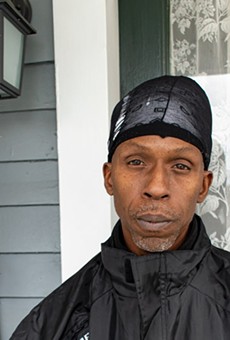When City Council meets on December 17, it’ll vote on legislation that would allow the city to take a crucial first step toward opting in to state rent stabilization laws.
Under the legislation, the city would award a $40,000 contract to Pennsylvania-based Northeast & Bucks Company to study the vacancy rate among apartment buildings with more than six units built before 1974.
Earlier this year, state lawmakers gave upstate communities the ability to opt into New York’s Emergency Tenant Protection Act, a series of rent stabilization and tenant protection laws that previously were previously in place only for New York City and some other downstate communities.
 Before communities can opt in, they have to determine that a “housing emergency” — a vacancy rate of 5 percent or lower — exists in the housing stock it wants to regulate.
Before communities can opt in, they have to determine that a “housing emergency” — a vacancy rate of 5 percent or lower — exists in the housing stock it wants to regulate.
Housing advocates have pushed for the study and said that they’re confident the survey will show vacancy rates that are low enough for the city to opt in to the tenant protection act. The laws offer valuable protections that will prevent rent spikes and help keep tenants in good standing from being forced out of their apartments
On Thursday, City Council’s finance committee voted to send the vacancy study legislation, which was submitted by Mayor Lovely Warren, to the full Council for a vote. As committee members discussed the legislation, most of the focus was on methodology.
“I’m extremely grateful the City is moving towards this direction,” councilmember Mitch Gruber said, at the committee meeting. “But I think because there’s so many ways to potentially study this, it’s just important to have some level of transparency on how we’re going to study this.”
While supportive of the study, incoming city councilmember Mary Lupien, a long-time housing advocate, expressed concern the study could evaluate properties that may be vacant but not currently inhabitable as vacancies, effectively raising the vacancy rate, among other concerns.
“There’s maybe 20,000 people this could protect,” Lupien said. “The best part about rent control, other than stopping rents from rising 20-30 percent, but it also institutes good no-cause eviction protection.”
Under the legislation, the city would award a $40,000 contract to Pennsylvania-based Northeast & Bucks Company to study the vacancy rate among apartment buildings with more than six units built before 1974.
Earlier this year, state lawmakers gave upstate communities the ability to opt into New York’s Emergency Tenant Protection Act, a series of rent stabilization and tenant protection laws that previously were previously in place only for New York City and some other downstate communities.
Related Vacancy study a first step toward rent stabilization law

Vacancy study a first step toward rent stabilization law
Earlier this year, state lawmakers made upstate communities eligible to opt in to tenant protections that have been in place downstate since 1974.
News
Housing advocates have pushed for the study and said that they’re confident the survey will show vacancy rates that are low enough for the city to opt in to the tenant protection act. The laws offer valuable protections that will prevent rent spikes and help keep tenants in good standing from being forced out of their apartments
On Thursday, City Council’s finance committee voted to send the vacancy study legislation, which was submitted by Mayor Lovely Warren, to the full Council for a vote. As committee members discussed the legislation, most of the focus was on methodology.
“I’m extremely grateful the City is moving towards this direction,” councilmember Mitch Gruber said, at the committee meeting. “But I think because there’s so many ways to potentially study this, it’s just important to have some level of transparency on how we’re going to study this.”
While supportive of the study, incoming city councilmember Mary Lupien, a long-time housing advocate, expressed concern the study could evaluate properties that may be vacant but not currently inhabitable as vacancies, effectively raising the vacancy rate, among other concerns.
“There’s maybe 20,000 people this could protect,” Lupien said. “The best part about rent control, other than stopping rents from rising 20-30 percent, but it also institutes good no-cause eviction protection.”


